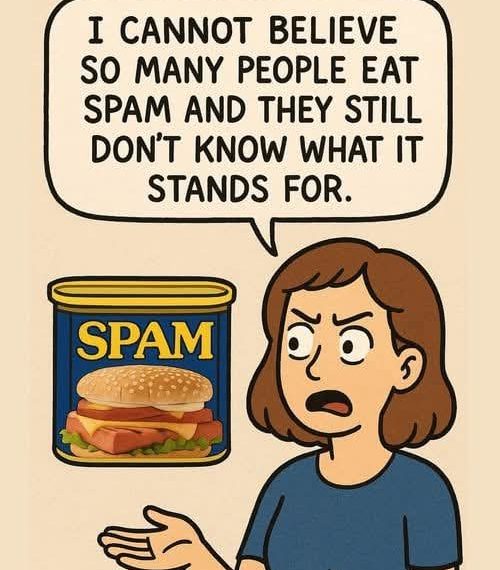SPAM is one of those iconic food items that has sparked curiosity, jokes, and debate for decades. With its bright blue and yellow can, mysterious name, and gelatinous texture, many people have wondered: What exactly is SPAM? And what is it made of? Let’s dive into its history, ingredients, production process, and cultural impact to understand why SPAM is more than just a canned mystery meat.
🥫 What Is SPAM?
SPAM is a canned, pre-cooked meat product made by Hormel Foods Corporation. It was first introduced in 1937 in the United States as a way to provide an affordable, shelf-stable source of protein during the Great Depression and World War II.
The name “SPAM” is a blend of “spiced ham”, though Hormel has never officially confirmed the origin. Over the years, it’s picked up various interpretations—from “Special Processed American Meat” to “Something Posing As Meat”—but the most accepted version remains “spiced ham.”
🧂 What Is SPAM Made Of?
Despite urban legends, SPAM is made of relatively simple and familiar ingredients. According to Hormel, the classic SPAM recipe contains just six ingredients:
- Pork with ham – The main meat source (pork shoulder and ham).
- Salt – For flavor and preservation.
- Water – Helps mix and bind the ingredients.
- Modified potato starch – Used as a binder to hold the meat together.
- Sugar – For taste.
- Sodium nitrite – A preservative that maintains color and prevents bacterial growth.
That’s it—no mystery meats, no byproducts, and no filler.
🏭 How Is SPAM Made?
SPAM’s production process is straightforward and designed for efficiency:
SPAM’s production process is straightforward and designed for efficiency:
- Grinding – The pork and ham are ground and mixed.
- Blending – Other ingredients like salt, sugar, and starch are added.
- Canning – The mixture is packed into cans.
- Cooking – The cans are sealed and cooked under pressure (retort process) to ensure sterility.
- Cooling and Labeling – The cans are cooled and labeled for distribution.
Thanks to this method, SPAM can last 2–5 years unopened on the shelf—ideal for military use, emergencies, and travel.
🌍 A Global Icon
Though SPAM originated in the U.S., its influence is global:
- Hawaii: SPAM is beloved in Hawaiian cuisine. SPAM musubi (grilled SPAM on rice wrapped in seaweed) is a staple snack.
- South Korea: SPAM is considered a luxury gift item and is often given in boxed sets during holidays.
- Philippines: It’s eaten for breakfast with rice and eggs.
- Guam: The country has the highest per capita SPAM consumption in the world.
🧠 Is SPAM Healthy?
SPAM is high in sodium, saturated fat, and calories, so it should be eaten in moderation:
- One serving (2 ounces) contains:
- 180 calories
- 16 grams of fat
- 7 grams of protein
- 790 mg of sodium (about 33% of the daily recommended intake)
While it’s not a health food, SPAM can be part of a balanced diet when consumed occasionally and paired with vegetables and whole grains.
Fun Facts About SPAM
- More than 8 billion cans of SPAM have been sold since 1937.
- SPAM was heavily used in World War II to feed Allied troops.
- There’s a SPAM Museum in Austin, Minnesota.
- Monty Python’s famous “SPAM” sketch gave rise to the term “spam” for unwanted email.
🔚 Conclusion
SPAM may be the butt of jokes, but it’s also a historic, adaptable, and culturally significant food product. With only a few ingredients and a long shelf life, it has fed millions across the world. Whether you enjoy it fried with eggs, in sushi, or as part of a stir-fry, SPAM has proven to be far more than just a canned curiosity.





